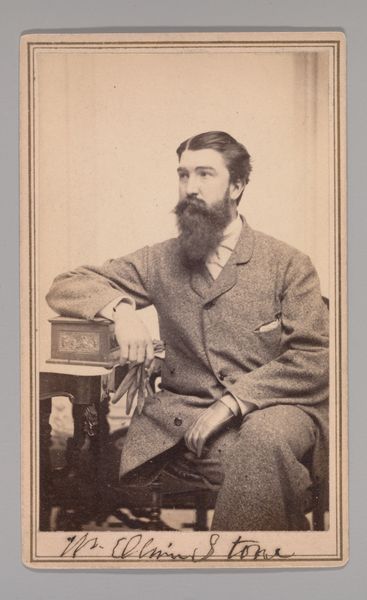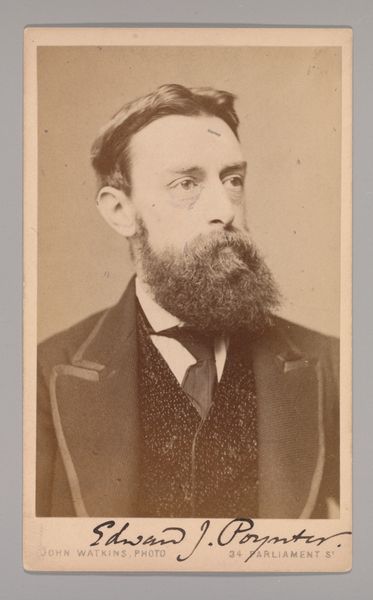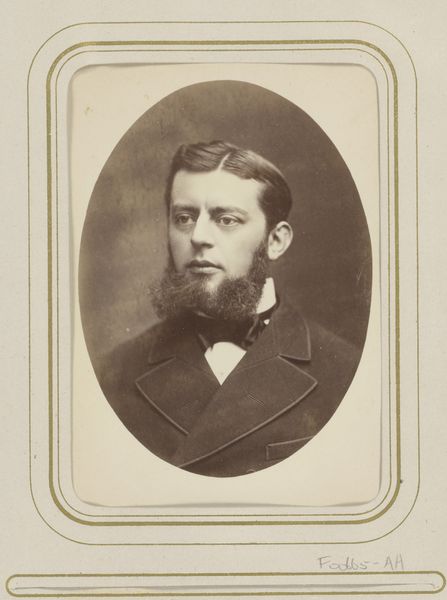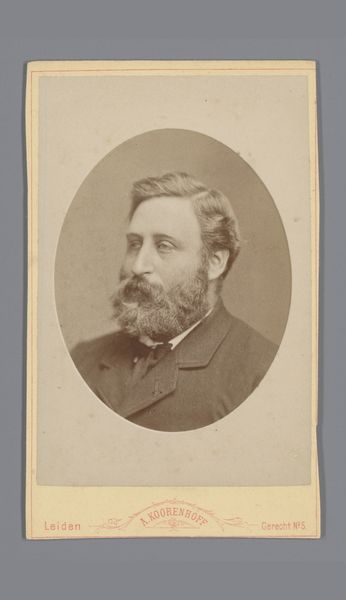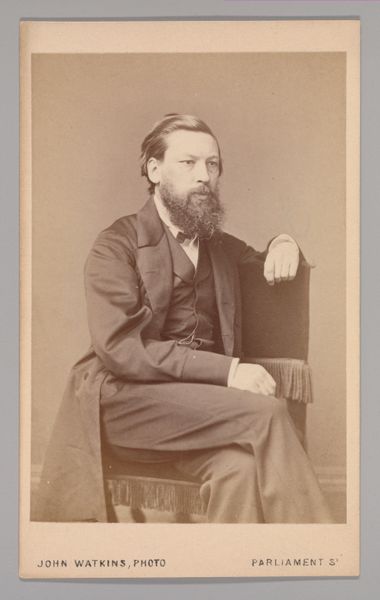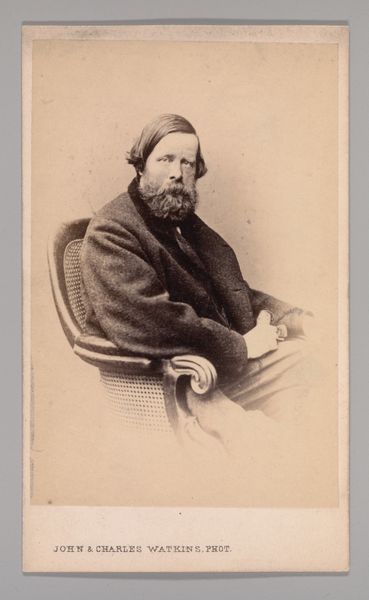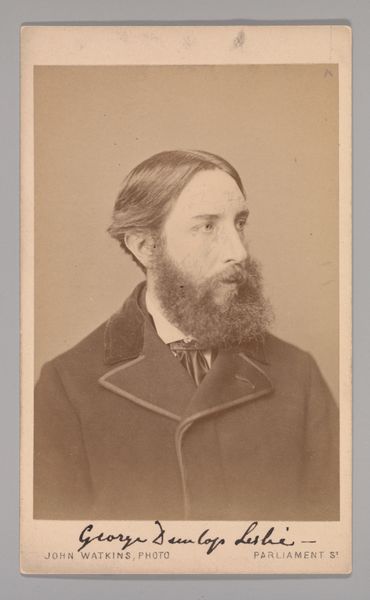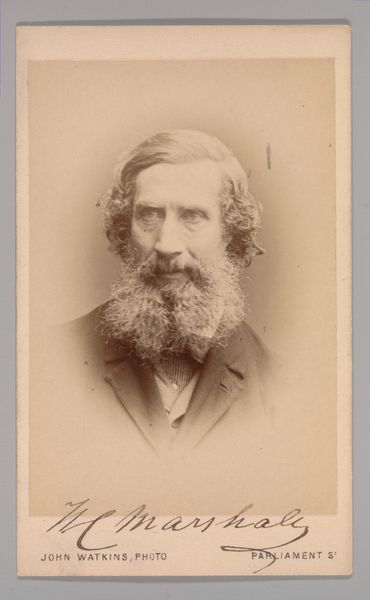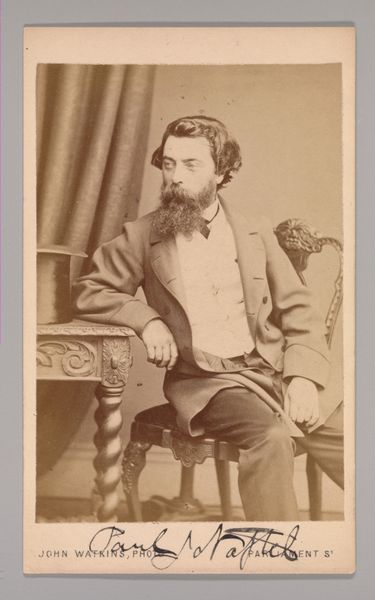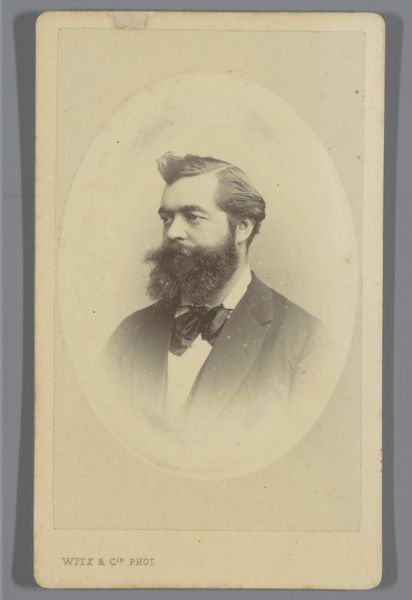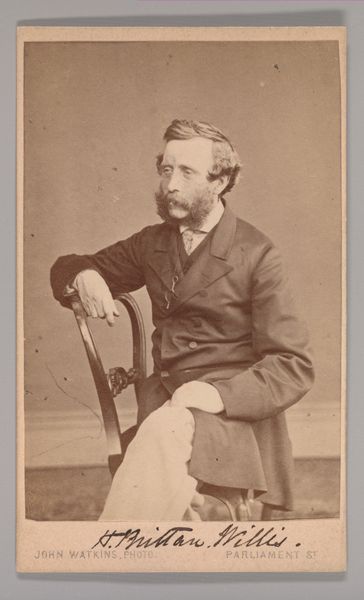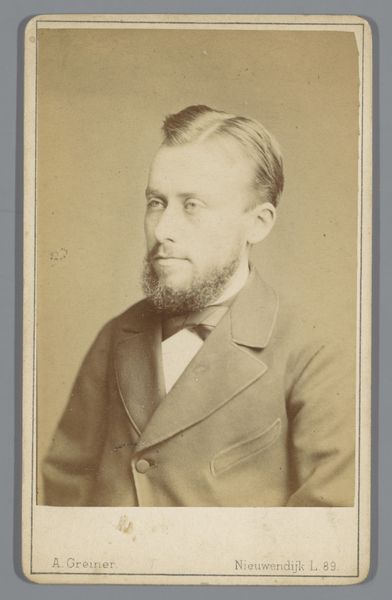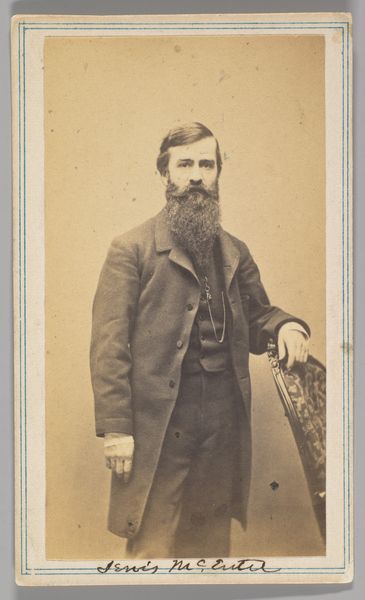![[Alfred Pizzey Newton] by John and Charles Watkins](/_next/image?url=https%3A%2F%2Fd2w8kbdekdi1gv.cloudfront.net%2FeyJidWNrZXQiOiAiYXJ0ZXJhLWltYWdlcy1idWNrZXQiLCAia2V5IjogImFydHdvcmtzLzVkOGFlNzg3LTNlNWYtNDI1Yy05MjY2LThjMjlhZmU2MTlkMC81ZDhhZTc4Ny0zZTVmLTQyNWMtOTI2Ni04YzI5YWZlNjE5ZDBfZnVsbC5qcGciLCAiZWRpdHMiOiB7InJlc2l6ZSI6IHsid2lkdGgiOiAxOTIwLCAiaGVpZ2h0IjogMTkyMCwgImZpdCI6ICJpbnNpZGUifX19&w=3840&q=75)
photography, albumen-print
#
portrait
#
photography
#
albumen-print
Dimensions: Approx. 10.2 x 6.3 cm (4 x 2 1/2 in.)
Copyright: Public Domain
Curator: This is a portrait of Alfred Pizzey Newton, a work from the 1860s by John and Charles Watkins. It’s an albumen print. Editor: Ah, what a face! He looks absolutely lost in thought, doesn’t he? So sepia-toned and wonderfully Victorian. Like he’s pondering the mysteries of the universe... or perhaps just what to have for dinner. Curator: Indeed. The albumen print process was quite fascinating. Egg whites coating the paper, creating a smooth surface...think about the material reality and how much labor would be required. And note the sharp details, characteristic of early photography's focus on faithful reproduction, yet inevitably shaped by the chemists/practitioners' intentions, choices and available materials. Editor: It makes you think about how different portraits were back then. Posing must have been so stiff and time-consuming compared to today’s smartphone snaps. Imagine sitting there perfectly still, bathed in studio light, while this process of applying egg-white, developing silver and sitting still for all eternity happens... Curator: Precisely! These sittings, and their material output, were luxury commodities for certain. The albumen process was becoming more widely distributed within Victorian society, and its relationship with portraiture demonstrates this. How portraiture was made, by who and what it communicates. The man, his material display via his coat, waistcoat, trousers and tie and also his ability to commission Watkins photographs show a statement of Victorian societal hierarchy. Editor: Absolutely. There is that interesting signature there at the bottom, could you speak about that. Curator: Of course, what we have at the bottom is evidence of mass-printing of a photographic copy - Watkins, an extremely influential practitioner. And 'Parliament st', indicating how widely used the business became in such a relatively short period of time. Think about its wider accessibility beyond a niche demographic as this developed through the Victorian era, the societal impact must have been enormous, creating social shifts by enabling social commentary in a mass-distributable, increasingly inexpensive way. Editor: It does bring that into question - accessibility, something only those with resources can attain and create, leaving me pondering on if much has changed or not today. Curator: Well said. And that makes me ponder further too, the means by which mass distribution occurs via the internet in modern society and whether that is a good thing too... food for thought.
Comments
No comments
Be the first to comment and join the conversation on the ultimate creative platform.
